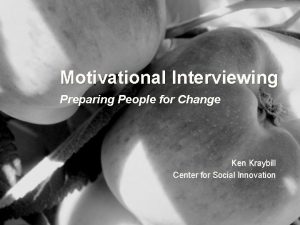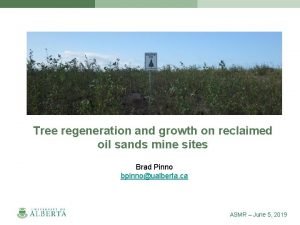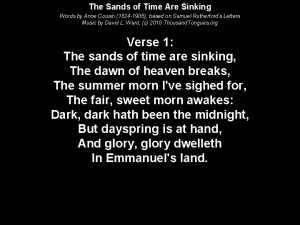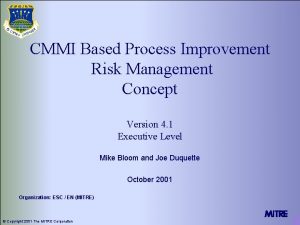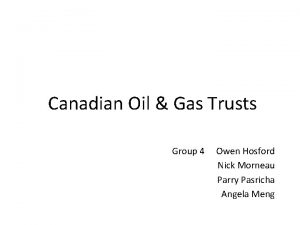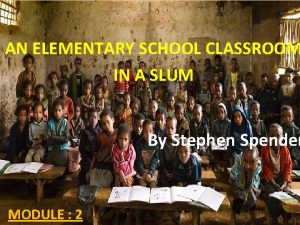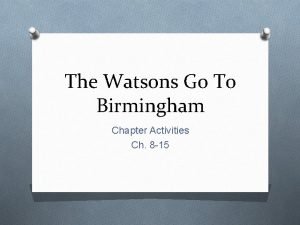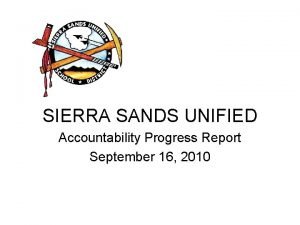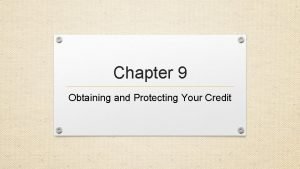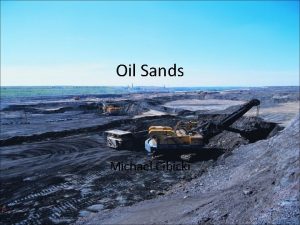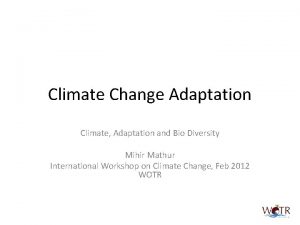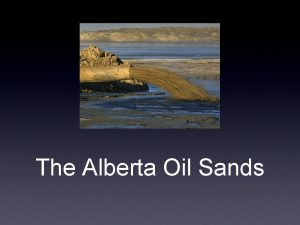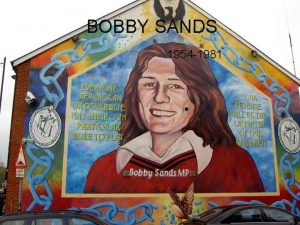TAR SANDS CLIMATE CHANGE Adaptation protecting and preparing
















- Slides: 16

TAR SANDS & CLIMATE CHANGE

Adaptation - protecting and preparing populations against the impacts and unpredictability Mitigation - Reduce the amount of GHG pollution that we are emitting

97% OF SCIENTISTS WORLDWIDE: THIS IS ANTHROPOGENIC

MITIGATION, CONSUMPTION When and where do you see fossil fuels?

TAR SANDS AND THE US The US imports ~8. 4 million barrels of oil and petroleum products a day. Canada is the largest supplier, providing 2. 4 million barrels – about ¼ - of these imports

ATHABASCA TAR SANDS Fort Mc. Murray. Warren Cariou

ALBERTA TAR SANDS IMPACT ENVIRONMENTAL, ECONOMIC, CULTURAL Environmental: • A barrel of bitumen (tar sands) refinement emits 3 x as much GHG as a barrel of oil • Enough land is removed every 2 days to fill Yankee Stadium • Bitumen-producing zone is around 54, 000 square miles –roughly the size of Florida • All vegetation must be stripped and all wetlands must be drained • Requires nearly 400 million gallons of water a day – enough to supply a city the size of Denver for a day. 90% ends up in toxic tailings ponds • Tailings ponds contain over a dozen carcinogens. Birds land, and never leave. • Bitumen is roughly ½ of Canadian exported crude. 95% of remaining reserves are oil sands.

ALBERTA TAR SANDS IMPACT ENVIRONMENTAL, ECONOMIC, CULTURAL Economic: • Uneven development for indigenous peoples • Massive inflation in cost of living: • Average home price: $600, 000 • 10 years ago: $174, 000 • $70, 000 a year is below poverty line Chief Jim Boucher of Fort Mc. Kay First Nation: “if it wasn’t for the oil sands, we would have no economy. . . So to be pragmatic and practical about it, the alternative is to do nothing and sit here and collect welfare or to be part of the economy. And I’d rather be part of the economy than let our people be there collecting welfare” (Weir 2008).

ALBERTA TAR SANDS IMPACT ENVIRONMENTAL, ECONOMIC, CULTURAL Cultural: • Decreased access to “the Bush” • Fishing and Hunting practices (and subsistence living) no longer viable • Forced assimilation into economy of oil sands Treaty 8 First Nation resident: “If I can no longer live off the land, and I am unable to eat the foods that have sustained our people for centuries, then the treaties are being broken again, because our treaty guarantees us to hunt, fish, and trap” (Gismondi and Davidson 132).




“AN ATHABASCA STORY”

“AN ATHABASCA STORY” Well, he thought, I guess I should just take a little less of this stuff, maybe make two trips. I’ll just wiggle my legs out of these holes and settle for a nice big armload of magic dirt. I imagine you can guess how that worked out. Right. It didn’t. Elder Brother was stuck fast in that Athabasca tar. By this time he couldn’t move a finger or a toe. Instinctively he called out to the voice that had spoken to him earlier. Help me! I’m sorry I didn’t listen to you. I’ll leave now with taking anything at all. But the voice didn’t answer. And Elder Brother was stuck there in the ground all night… (Cariou 74)

“AN ATHABASCA STORY” … the dirt closed over him. It pressed into his nostrils, his ears, his mouth, even into his clenched bum. The weight of it pushed down and down until he couldn’t even move an eyelid. Soon the thing began to move, and it hauled him slowly across the wasteland, encased there in the tar as if he was a fossil. And eventually the truck reached the edge of the huge smokey refinery, where it dumped him and many tons of tar sand into the yawning hopper that was the beginning of the processing line. And inside the refinery he was made very warm indeed. Of course Elder Brother can’t die, luckily for him. Or perhaps not so luckily. He’s still alive even now, after everything he’s been through. It’s true that people don’t see him much anymore, but sometimes when you’re driving your car and you press hard on the accelerator, you might hear a knocking, rattling sound deep in the bowels of the machine. That’s Elder Brother, trying to get your attention, begging you to let him out. (Cariou 75)

 Climate change 2014 mitigation of climate change
Climate change 2014 mitigation of climate change Decisional balance
Decisional balance White sands missile range
White sands missile range Asmr aspen disease
Asmr aspen disease The sands of time are sinking meaning
The sands of time are sinking meaning Cmmi risk management
Cmmi risk management Canadian oil trusts
Canadian oil trusts Blanged peon
Blanged peon Chris sands nhs
Chris sands nhs Poetic devices in an elementary school
Poetic devices in an elementary school Ultra glide the watsons go to birmingham
Ultra glide the watsons go to birmingham Sierra sands usd
Sierra sands usd Sagd 101
Sagd 101 Brittany sands
Brittany sands Glamour tv
Glamour tv What is noninstallment credit
What is noninstallment credit Chapter 9 obtaining and protecting your credit
Chapter 9 obtaining and protecting your credit

